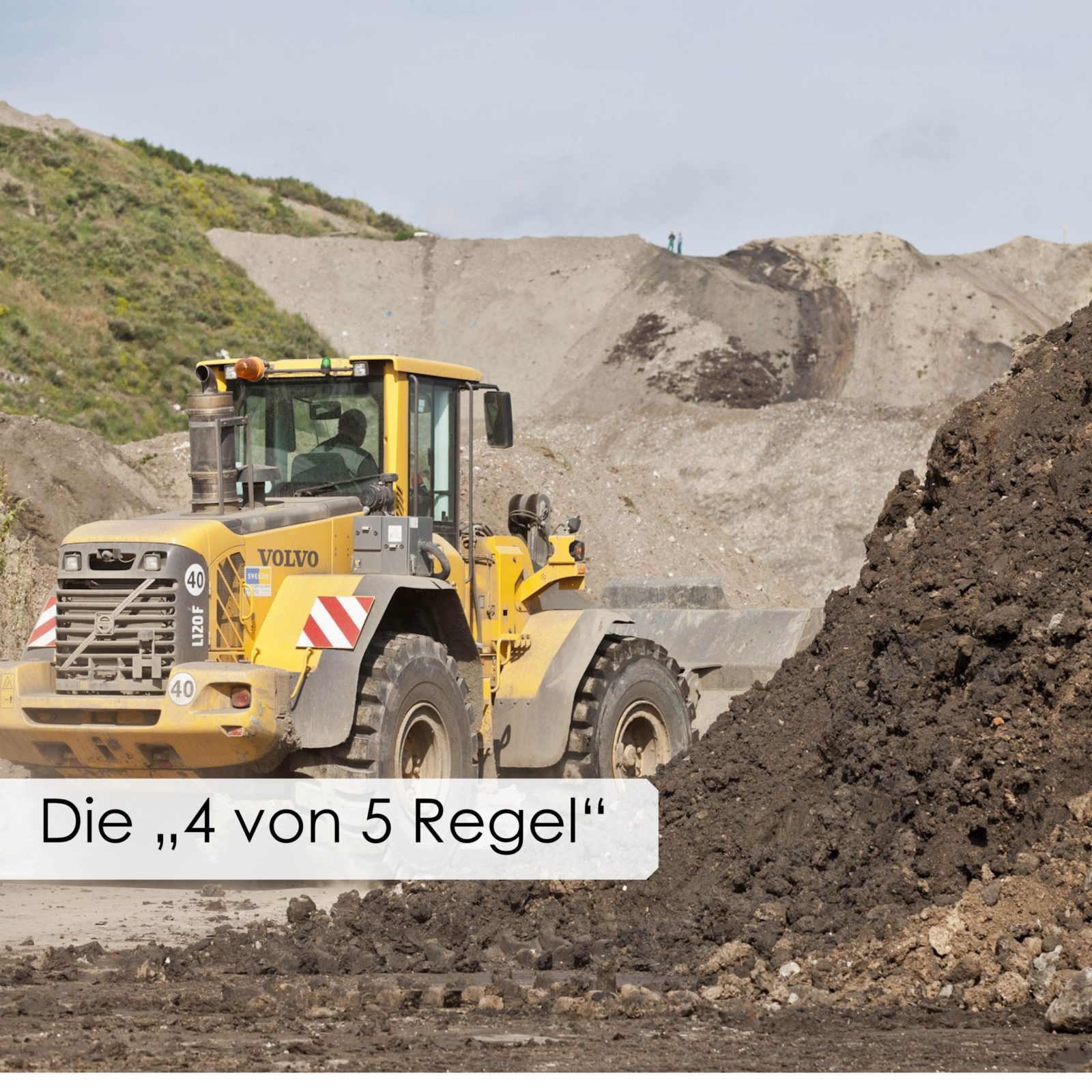The "4 out of 5 rule" - assessment of uneven distribution of substances in the heap
Heaps of mineral waste can be heterogeneously composed and show fluctuations in material composition. Sub-quantities with high and low pollutant contents can therefore occur side by side in a heap. Sampling shall be carried out in such a way that the characteristic features and the variation in composition of the waste, which are decisive for the choice of the disposal route, are recorded. Samples may therefore not only be taken and compiled into composite and aggregate samples where a low level of contamination is already apparent. It is also not permissible to disregard conspicuous individual samples or their analysis results.
An individual sample whose properties are clearly above or below the average properties does not characterise the entire waste. Therefore, if after a heap sampling, values are found in the composite samples that correspond to different installation or landfill classes, it must first be checked whether portions of deviating material composition can be recognised and delimited. In this case, the possibilities of separate sampling and disposal of these fractions must be examined. In the event that no delimitable proportions can be identified, the Federal/State Working Group on Waste (LAGA) provides information on the assessment of uneven substance distributions in a heap with the LAGA collection of methods.
An assignment/limit value is considered to be met if two conditions are fulfilled:
- the mean value (M) complies with the allocation/limit value and
- 80 % (4 out of 5 rule) of all laboratory samples (LP) comply with the allocation/limit value.
[LAGA-Methodensammlung, Abfalluntersuchung, 2018, p. 193 f.].
The prerequisite for the application is that
- wastes of different compositions have not been mixed,
- the sampling of the heap complies with the requirements of LAGA Notice 32 (LAGA PN 98) and
- the samples obtained correspond as far as possible to the average properties of the total quantity of the heap.
Assessment of uneven substance distribution in existing buildings
When sampling in existing structures, it may happen that the findings of individual sampling points lead to different waste classifications. Due to the precautionary principle, the excavation materials from a section between two sampling/drilling points, of which at least one drilling point of the investigated sample shows a hazardous waste, are to be classified as hazardous waste.
The classification of finishing material as non-hazardous waste, on the other hand, requires that the relevant section is on both sides is bounded by drill points that confirm this classification. If there is a possibility that relevant proportions of non-hazardous excavation materials are located within an area with excavation material classified as hazardous, the sampling points can be compacted. If differently contaminated areas are clearly delineated, disposal costs could be reduced.
#mullandpartner #engineeringforabettertomorrow #news
Our business areas
Environmental and geotechnical engineering
Construction and project management
Renewable energies
Real estate development
Infrastructure
Water management
Our companies
M&P Engineering Company
M&P Engineering Company Munich
T&P Beratende Ingenieure
P&P Real Estate Consulting
P&B Real Estate Management
P&M Project Management
M&P Umwelttechnik
Please contact us
Follow us on


